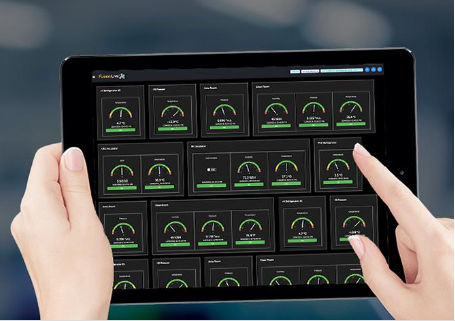Benefits of using wireless temperature monitoring system over wired system
Technology is getting advanced day by day. Smart gadgets have taken control over the world and are continuously progressing at a quick rate. A wireless temperature monitoring system is one such technology that was impossible to think of in earlier times.
The wireless temperature monitoring system technology presents numerous applications. From thermal industries to pharmaceutical industries, countless industries have profited from it and will continue to use the product for various reasons.
One of the most important measured entities in science and industry is – Temperature. In the recent era, the development of innovation is connected with wireless technology. This has given better approaches to applying temperature measurement sensors combined with digital technology to gather, organize, and analyze the data collected. When complex multi-sensor applications are required, a Wireless Temperature Monitoring system offers a way to eliminate the hustle of running numerous leads over significant distances through the means of harnesses or channels to a control room, instrument board, or equipment rack while monitoring different leads. While for simple one or two sensor applications, by simply installing the wireless temperature sensor and setting up the receiver, the task is done.
Many transmitting and receiving devices are available to conduct temperature measurement processes wirelessly. It also provides the benefit of measuring the humidity levels. Earlier, every industry was dependent on red systems. Today, wireless monitoring systems are generally more utilized, offering easy accessibility and low-cost benefit over wired systems. Let’s look at various advantages of using wireless systems over wired systems.
Table of Contents
1. No need for wiring or trenching
A wired framework might require many yards of cable to connect through various endpoints. A wired system thus proves to be expensive when connections required are thousands of feet away. Running by battery, solar, or a power-scavenging gadget, remote frameworks have no conduit prerequisites, which wipes out the hardwiring instrumentation requirement.
2. Reduction in installation and additional costs
In contrast with a wired system, which is an expensive setup, the wireless system costs less for installation, depending upon its application specifications. A wired framework can require new cables, including trenching, equipment, and labor, whenever fixed or reconfigured, whereas a wireless framework is effectively scaled without adding new equipment. To meet recent advancements or expanded requirements, wireless systems are capable of adding new wireless instruments very easily. Thus, a wireless system can be configured without the need for labor.
3. Can operate on different grounds
In some situations, wires cannot be installed on properties that the organization does not possess. The modern industrial transceiver nodes of a wireless temperature monitoring system layout strong, long-range data transmission that supports signal strength through different terrains and climatic situations. In any event, while operating in combative and difficult conditions, a wireless framework can work for quite a long time without being impacted by natural circumstances, for example, snow, rain, or dust storms.
4. Eliminates the condition of data loss
When a wired system gets fail due to some reasons such as cut wires, corrosion, or any unfriendly condition, administrators are not made aware of the issue, bringing about disappointments until instrumentation is back on track. Designed with a facility of alarm, a wireless system provides an alert when information isn’t in transmission. Most issues are avoidable by preventative maintenance measures associated with wireless diagnostics.
5. Get combined with different sensors
Wireless temperature monitoring systems with an open design permits users to coordinate many types of sensors to monitor resources. Subsequently, an assortment of sensors can be added or deducted depending upon the situation to quantify parameters like temperature and humidity. Users can select the best sensor for every application and bring all that information from various sensors to a solitary point with a single information interface. In addition, a single receiver can receive data from 50 transmitters and more, covering a range of 100 meters in line of sight.
Summary
Wireless monitoring systems are more savvy and flexible than regular manual checks and wired instrumentation, wireless monitoring systems address various difficulties that wired frameworks can’t address. To get the best wireless temperature monitoring system in the market, head on to Tempsens, one of the greatest suppliers of Thermal and Cable Products. It provides high-quality thermal engineering products, accessories, and services that are built to specific customer needs.











